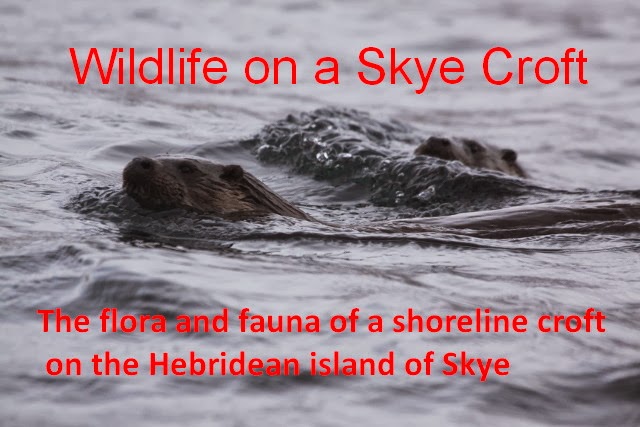The first was an outing with the Skye branch of the Scottish Wildlife Trust to look for water plants at Storr Lochs, a few miles north of Portree. A botanical trip, so as ever Stephen Bungard was the leader and his comments on the walk are at http://skyeraasayplants.wordpress.com/. We found four pondweeds (bog, perfoliate, broad-leaved and red) and several horsetails.
%2BInternode%2Bx10.jpg) |
| Field Horsetail showing branch and stalk nodes x10 |
.JPG) |
| Broad-leaved Pondweed (Potamogeton natans) |
 |
| Grass of Parnassus (Parnassia palustris) |
.JPG) |
| Egghead Mottlegill (Panaeolus semiovatus) |
.JPG) |
| Persistent Waxcap (Hygrocybe autoconica) |
.JPG) |
| Dung Roundhead (Stropharia semiglobata) |
Then on Saturday in the sunshine, we went to a National Trust for Scotland event at Balmacara Square, across the bridge, a few miles beyond Kyle of Lochalsh. There is a lovely village pond there and I took off my shoes and socks, rolled up my trouser legs to go pond dipping along with the other children. I found lots of water boatmen, and larvae of palmate newts, while damselflies danced around the edge of the pond.
.JPG) |
| Water Boatman (Notonecta obliqua) |
.JPG) |
| Blue-tailed Damselfly (Ischnura elegans) |
.JPG) |
| Creeping Lady's Tresses (Goodyera repens) |
Meanwhile on the croft I put the mammal trap out over a single, well used vole run over a 36-hour period, inspecting regularly. We caught 4 short-tailed vole, a common shrew and a wood mouse, all of which therefore seem to use the same track. (Voles are eating brassicas, wood mice are eating peas).
To add to voles and mice, further pests, cabbage white caterpillars, are now attacking cabbages with some ferocity.
 |
| Wood Mouse |
.JPG) |
| Heather Fly (Bibio pomonae) |

No comments:
Post a Comment